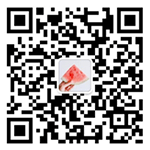Proxylane Ingredients: L’Oréal’s Flagship Anti-Aging “Leading Lady”
Decoding Pro-XylanePro-Xylane (academic name: C-Xyloside) is a compound formulated with “water + propylene glycol + hydroxypropyl tetrahydropyrantriol.” As a patented ingredient of L’Oréal, it is commercially known as Pro-Xylane, leading the industry to equate hydroxypropyl tetrahydropyrantriol with Pro-Xylane. Introduced in 2006 in Lancôme products, Pro-Xylane has been incorporated into L’Oréal’s full product spectrum—from luxury to mass-market lines. It effectively stimulates glycosaminoglycan (GAG) production in the extracellular matrix (ECM), enhancing skin hydration by increasing intercellular water retention. Pro-Xylane also acts on the dermo-epidermal junction (DEJ), improving adhesion between the dermis and epidermis. By inducing synthesis of dermal and epidermal structural components, it promotes tissue regeneration, maintains dermal elasticity, and prevents premature aging. Not All Hydroxypropyl Tetrahydropyrantriol Qualifies as Pro-XylaneThe core component of L’Oréal’s Pro-Xylane is hydroxypropyl tetrahydropyrantriol (C₈H₁₆O₅), composed of diastereomers with multiple conformational isomers. According to Jiang Ligang’s 2020 study “Physicochemical Analysis and Quality Considerations of Hydroxypropyl Tetrahydropyrantriol,” commercial variants often exhibit inconsistent diastereomer ratios, impurity peaks (e.g., residual acetic acid/borate salts), or single-isomer profiles. Mainstream synthesis routes generate byproducts like acetic acid and borate residues. As noted by Jun Tai Pharmaceutical’s technical documentation, two prevalent methods involve: These processes highlight technical challenges in minimizing acidic/alkaline byproducts that cause off-flavors and discoloration. Efficacy Varies with Pro-Xylane ConcentrationProduct labels typically report “Pro-Xylane solution” content (i.e., “water + propylene glycol + hydroxypropyl tetrahydropyrantriol”). The active ingredient comprises 30–40% of this solution. For example, La Mer’s Black Serum contains 30% Pro-Xylane solution (≈9% active hydroxypropyl tetrahydropyrantriol). L’Oréal’s 2016 clinical trial (240 subjects) published in Acta Dermato-Venereologica demonstrated: Chinese Domestic Proxylane Ingredient Suppliers Begin to Grow L’Oréal Dominates Global Pro-Xylane ProductionThe global Pro-Xylane market reached USD 0.56 billion in 2022, with Chinese domestic market accounting for 32.39% of demand. Excluding Chinese domestic market, L’Oréal retains exclusive control over Pro-Xylane supply through its subsidiary Novéal, prioritizing in-house luxury brands. Market…











